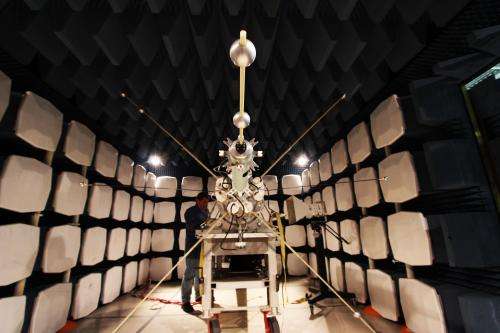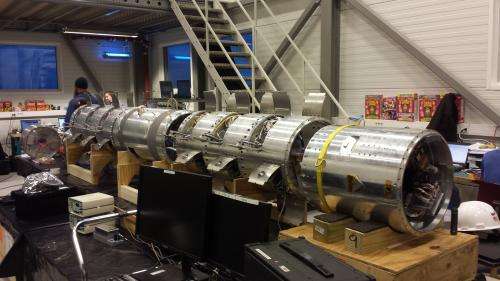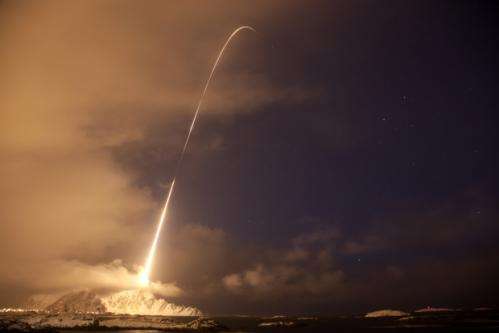Scientists study the interaction of the solar wind and Earth's atmosphere from Norway

(Phys.org) —Northern Norway in December? It may not be your ideal spot to visit, but for NASA sounding rocket teams and university scientists, this is the ideal place to conduct experiments to increase the understanding of the interaction of the solar wind with Earth's upper atmosphere.
The launch window opens November 19 at the Andoya Rocket Range for the Cusp Alfven and Plasma Electrodynamics Rocket (CAPER) and the Cusp-Region Experiment (C-REX) that will conduct studies of activities in the Earth's cusp, magnetic field features in the magnetosphere associated with regions through which plasma from the sun can have direct access to the upper atmosphere.
CAPER will launch on a four-stage Talos-Terrier-Oriole-Nihka (Black Brant XII) to a projected altitude of 328 miles. The launch is scheduled to occur between 8 a.m. and noon, local time (2 a.m. to 6 a.m. EST).
"This experiment will measure waves and particles in several frequency ranges, from Hz to MHz, with sufficient resolution to determine the phase relation between them, and hence the nature of their interaction including direction of energy flow," said Dr. James LaBelle, CAPER principal investigator from Dartmouth College, Hanover, New Hampshire.
"By making the most advanced measurements of this type ever made in the cusp, we expect to answer the question of whether wave-particle interactions there are identical to those in other space plasma environments or have their own special characteristics due to unique aspects of the particle distribution functions in the cusp," LaBelle said.
The C-REX mission will launch on a four-stage Talos-Terrier-Brant-Nihka (Black Brant XII) to a projected altitude of 328 miles. The launch window is the same as for CAPER.

The mission requires the deployment of 24 individual canister sub-payloads. Each canister, containing barium and/or strontium, will be propelled away from the main payload by small rocket motors and produce colorful vapor clouds between the altitude of 93 and 248 miles over the Greenland Sea west of Svalbard, Norway.
Barium produces a cloud with a mixture of blue-green colors. Strontium in combination with neutral barium creates a bluish-purple color cloud. Tracking the strontium/barium drifts will show neutral winds, whereas the barium drift will show ion velocities. The vapor tracers do not pose a risk to health or the environment.
Ground–based cameras and those on a NASA King Air B-200 plane will track the tracers.

Mark Conde, C-REX principal investigator from the University of Alaska, Fairbanks, said, "The images will be used to triangulate the three-dimensional position and motion of each cloud, in order to measure winds and electric fields in the thermospheric region that is exposed to Earth's geomagnetic cusp."
"For reasons that are currently not understood, there is a permanent density increase in this part of Earth's thermosphere, which is expected to cause small but important and currently unpredictable perturbations to the orbits of spacecraft flying through it. By measuring winds and ion motion at multiple locations inside the density enhancement, we hope to understand the flows that are responsible for creating and sustaining it," Conde said.
The launch window for both missions begins November 19. It ends December 3 for CAPER and December 7 for C-REX.
Provided by NASA




















